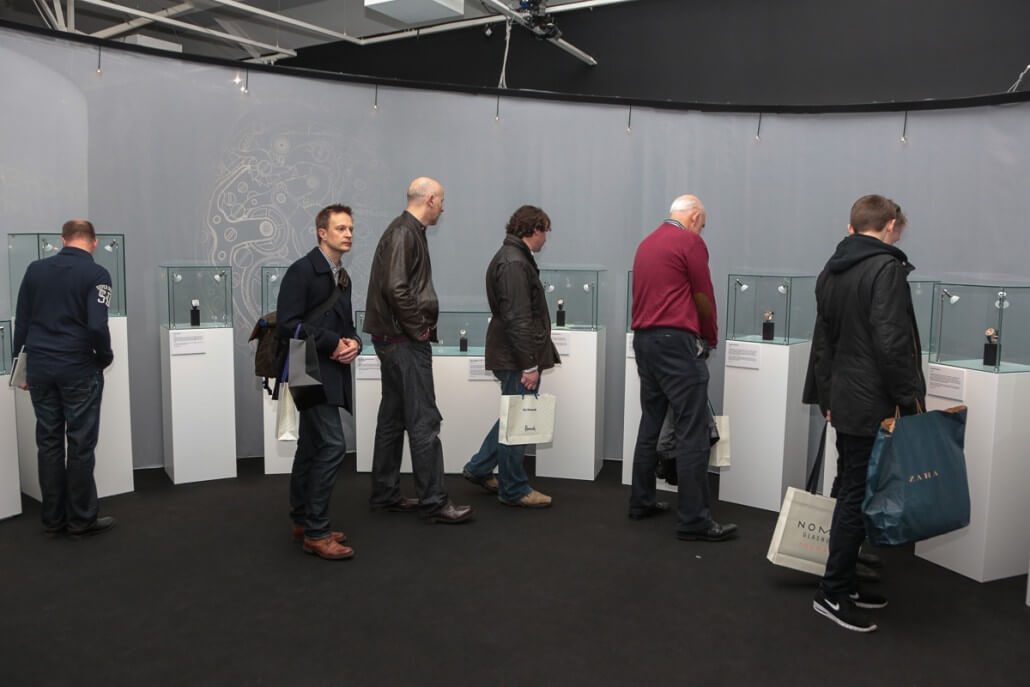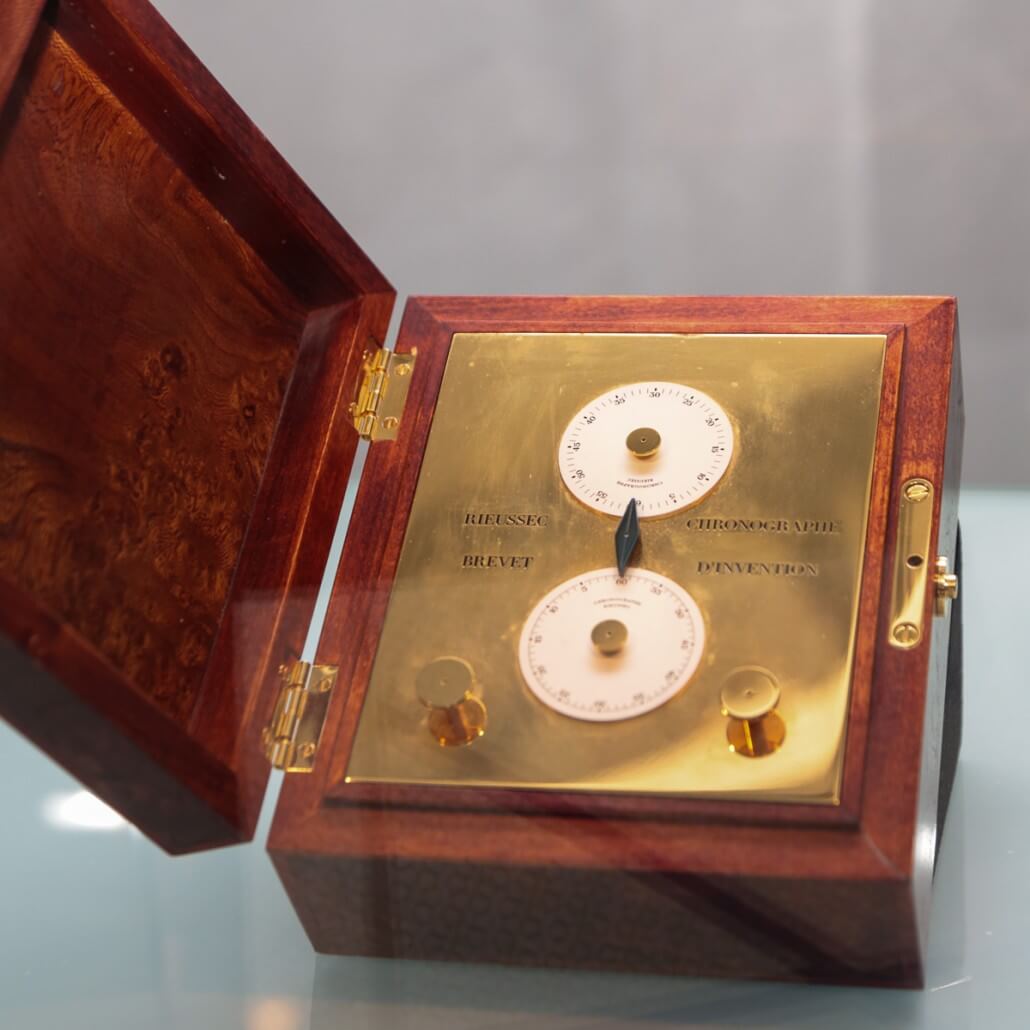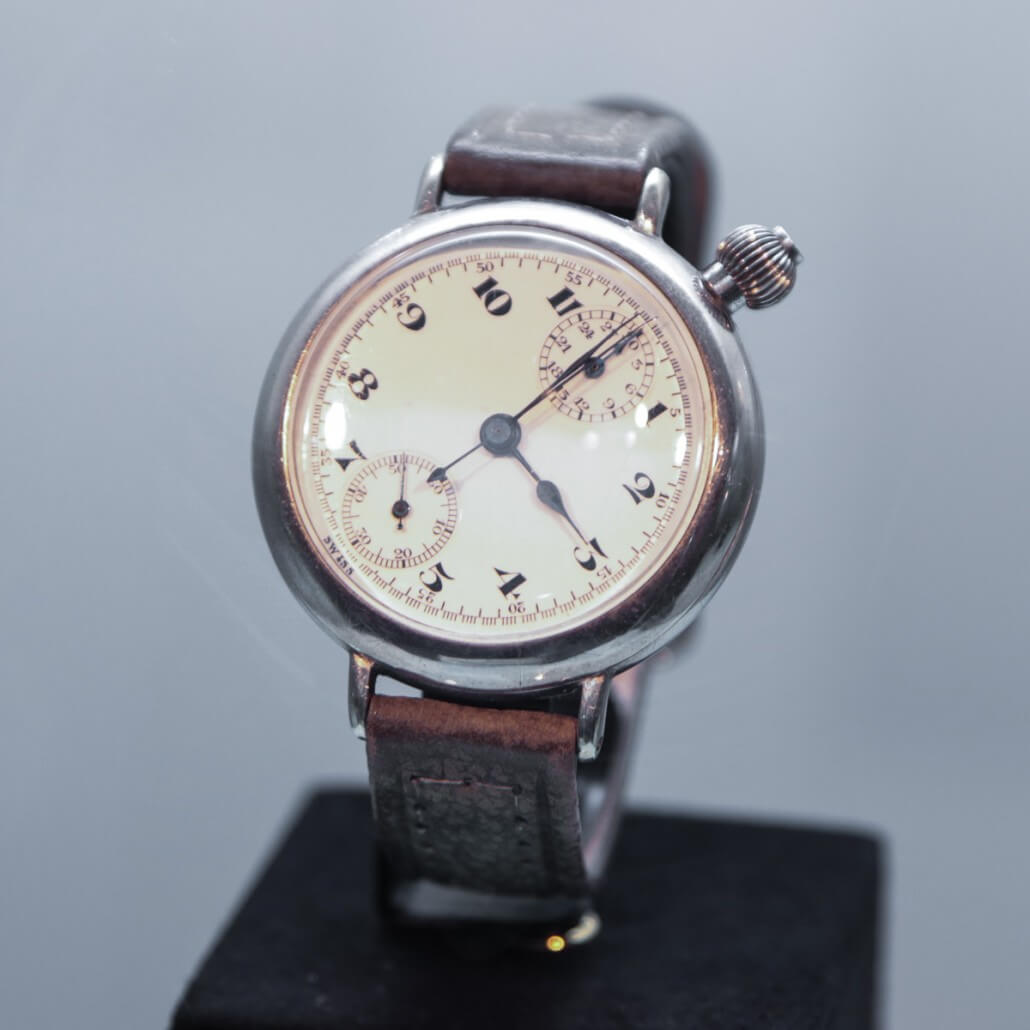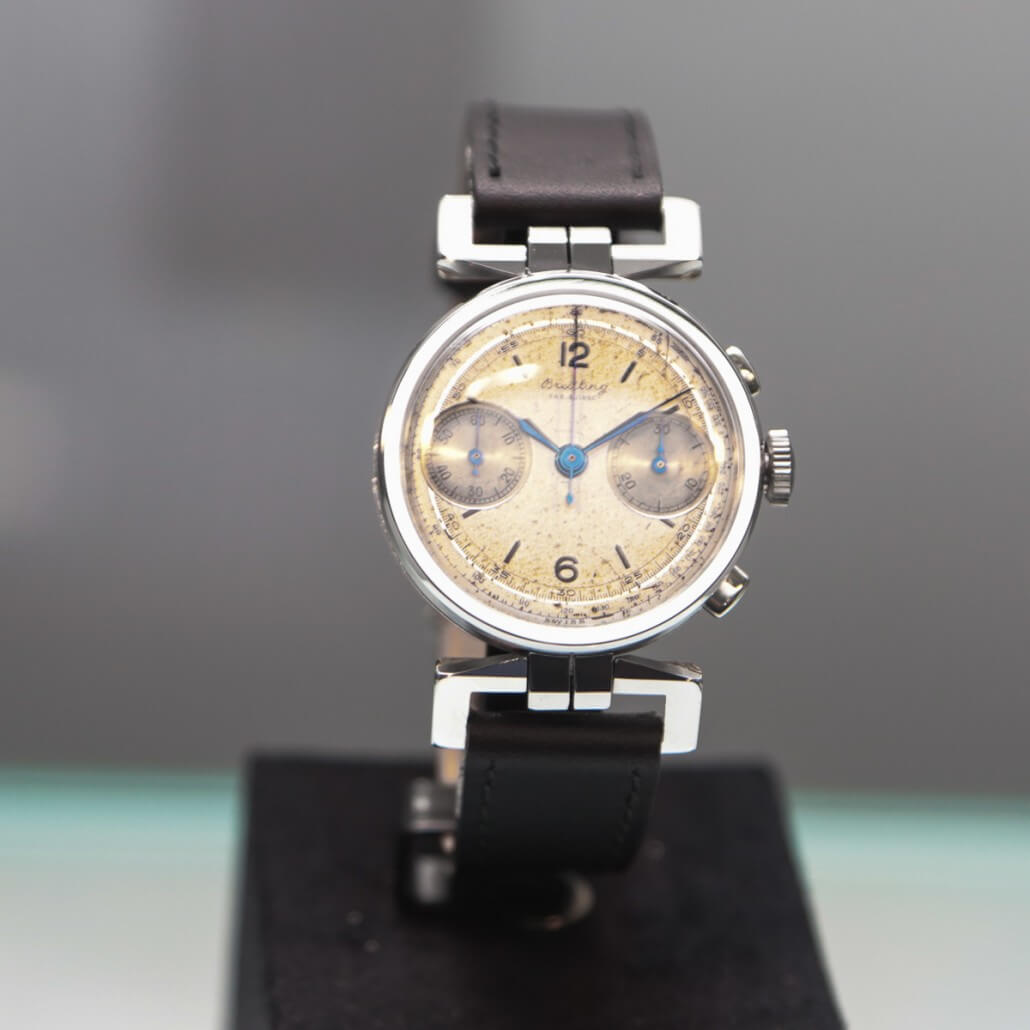by Ian Skellern
Among the many highlights of SalonQP 2015 was the “Inside a Second” exhibition of chronographs presented in partnership with the Foundation de la Haute Horlogerie. The exhibition included the George Daniels co-axial four-minute tourbillon with Daniels’ compact chronograph mechanism; that would have been enough chronograph for me all by itself, but there were many more.
According to the Foundation de la Haute Horlogerie (FHH), “A chronograph is a watch that records elapsed time. This function, the most familiar and simple-to-use ‘complication’ in wristwatches, is also notoriously complex to engineer and has formed the basis for one of the most vibrant and desirable genres in watchmaking.”

The ‘Inside a Second’ chronograph exhibition presented at SalonQP 2015 in collaboration with the Foundation de la Haute Horlogerie
And as you will see from the watches featured below, many chronographs are among the most well-known and desirable watches of both yesterday and today.
The “Inside a Second” exhibition at SalonQP was divided into three parts:
- A timeline showing how the measurement of time evolved
- A display of some of the important chronographs throughout history
- A display of leading chronographs available today
Here we will be focusing on the display of some of the important chronographs throughout recent history.

The ‘Inside a Second’ chronograph exhibition presented at SalonQP 2015 in collaboration with the Foundation de la Haute Horlogerie

The Nicolas Rieussec “chronograph with seconds indicator” from 1821, previous to the Louis Moinet find the oldest known chronograph
On September 1, 1821, French watchmaker Nicolas Rieussec to the royalty used a new instrument he had developed to time horse races, following a commission from King Louis XVIII.
Rieussec was the first to use the term “chronograph,” and his device could record up to four runners or events simultaneously using a point dipped in ink to trace the time of a graph.
It should be noted, though, that it has been recently discovered that Louis Moinet had actually made the first chronograph (though he called it a “compteur de tierces”) several years earlier in 1816 (see Discovery, Firsts, And The Louis Moinet Compteur De Tierces).
This Vacheron Constantin split-seconds chronograph with minute counter and minute repeater from 1895 features a pink gold enamel dial with Roman numerals, 30-minute counter at 12 o’clock, small seconds at 6 o’clock, and an external minute track. The chronograph pusher is in the crown and the split-seconds pusher is on the case band.
As with many wristwatches originating around this period of time (1915), this Heuer wrist chronograph began life as a ladies’ pocket watch movement that has been rotated a few degrees. This is one of the oldest known wristwatches by Heuer. There is a single pusher for stop, start, and reset in the crown.
Breitling was the first to make a wristwatch chronograph with a separate pusher at 2 o’clock for start/stop and reset the elapsed time counters. Until then, the pusher was always integrated into the crown.
Breitling filed a patent for an independent chronograph pusher on a pocket watch in 1923, and another patent in 1934 for a second reset pusher. The latter allowed timing to be paused without the need to restart.
While relatively little known, this Seiko was in a race with Zenith and Heuer/Breitling/Hamilton to produce the first automatic chronograph. Seiko’s model was released in 1969, the same year the Japanese brand presented its first quartz-regulated wristwatch.
The Seiko 6139 automatic chronograph was initially only available domestically in Japan. At its heart is the “magic lever” bi-directional winding system and column wheel, which Seiko still uses today.
Fitted with the Caliber 11 Chronomatic automatic chronograph movement developed in partnership with Breitling, Büren, and Hamilton and with its water-resistant square case and opposing pushers and crown, the Heuer Monaco was the most radical automatic chronograph of its day.
The Monaco became indelibly associated with Steve McQueen after he wore the watch in the motor racing film, Le Mans.
With its now-iconic El Primero movement, Zenith is generally accepted as having won the battle to become the first in the late 1960s to produce an automatic winding chronograph. The El Primero movement is still in production and it remains one of the finest chronograph movements ever made thanks to its high frequency five-Hertz escapement and high-quality, robust design.
The El Primero movement featured column wheel control at a time when competitors were using the more cheaply produced cam-and-lever construction. The quality and reliability of the El Primero was enough to attract the attention of Rolex, which began using it in the Daytona model in 1988.
While earlier Cosmograph Daytonas used a pump-type pusher for operating the chronograph functions, screw-down pushers and crowns were developed for later models to increase durability and water resistance.
The Rolex Cosmograph Daytona reference 6265 was produced from 1971 through 1988 and featured Rolex Caliber 727, which was based (as all pre-1988 Cosmograph movements were) on the Valjoux 72 chronograph movement.

The George Daniels co-axial four-minute tourbillon with Daniels’ compact chronograph mechanism from 1994
This was the watch that for many made the chronograph exhibition worth looking at all by itself, the George Daniels co-axial four-minute tourbillon with Daniels’ compact chronograph mechanism. This was the twenty-third and last pocket watch that Daniels completed. It was constructed while Daniels was still developing the co-axial escapement, and while he was writing his book, The Practical Watch Escapement.
The tourbillon carriage has a four-arm balance with gold adjusting weights with free-sprung overcoil hairspring. The Daniels compact chronograph mechanism is set to the right of the tourbillon carriage and is activated by two gold pushers in the case band.
Over the last ten years, TAG Heuer has developed a series of concept watches with the aim of ever-greater timing accuracy. Following on from the Mikrotimer concept watch chronographs that could time intervals down to a 1/1000th of a second, in 2012 TAG Heuer presented the Mikrogirder, which could time intervals down to 1/2000th of a second. This was possible by using a 1,000 Hz beam-and-girder escapement with a flat spring rather than a traditional spiral spring.
For more information on the “Inside a Second” exhibition, please visit www.salonqp.com/inside-a-second-discover-the-history-of-the-chronograph.









Leave a Reply
Want to join the discussion?Feel free to contribute!